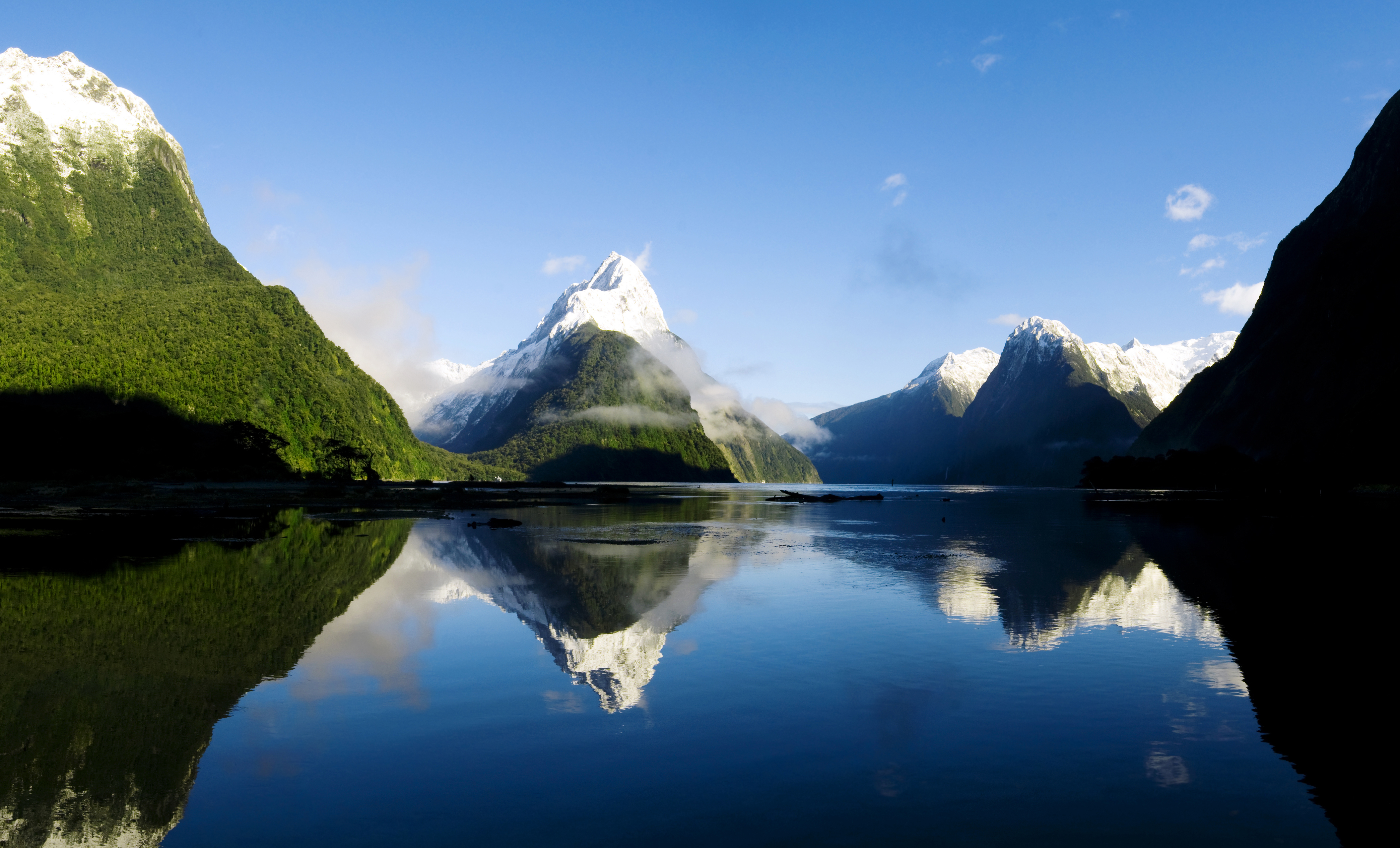Milford Sound is a scenic sea inlet in Fiordland National Park on the west coast of New Zealand’s South Island. The sound is known for its steep valleys, high waterfalls, lush forests, and abundant wildlife. The 1,700-acre (690-hectare) Piopiotahi Marine Reserve, one of 10 marine reserves in the Fiordland region, lies along the northern side of the sound. The reserve acts to protect the sound’s native animals and their habitats.

Milford Sound stretches about 10 miles (16 kilometers) inland from the Tasman Sea. The sound is surrounded by mountains, including the 5,550-foot (1,692-meter) Mitre Peak. Milford Sound is a popular tourist destination. Helicopter, airplane, and boat tours offer visitors breathtaking views of the sound and surrounding area. Milford Sound offers a number of scenic hiking trails, including the 33-mile (53.5-kilometer) Milford Track, which is sometimes called the “finest walk in the world.” The 74-mile (119-kilometer) Milford Road is a scenic drive that connects the sound to the town of Te Anau.

New Zealand’s native Māori people named Milford Sound Piopiotahi (pronounced pee oh pee oh TA hee), after a native bird, a species of thrush, that is believed now to be extinct. According to Māori legend, the demigod (partly mortal, partly divine being) Tu-te-raki-whanoa carved the sound. In the 1820’s, the Welsh sealer John Grono gave the sound its European name in tribute to his birthplace of Milford Haven, Wales.
Visitors wishing to experience Milford Sound had to hike in or come by boat until the Homer Tunnel opened to the public in 1954. The tunnel provided a road link between the sound and Te Anau. Some lawmakers have proposed controversial tunnel and monorail projects to link the sound more directly to the tourist center of Queenstown.
In 1986, the United Nations Educational, Scientific and Cultural Organization (UNESCO) added Fiordland National Park to its World Heritage List. The list includes sites UNESCO considers to be places of unique natural or cultural importance. The park is listed as part of the Te Wāhipounamu World Heritage Area.
